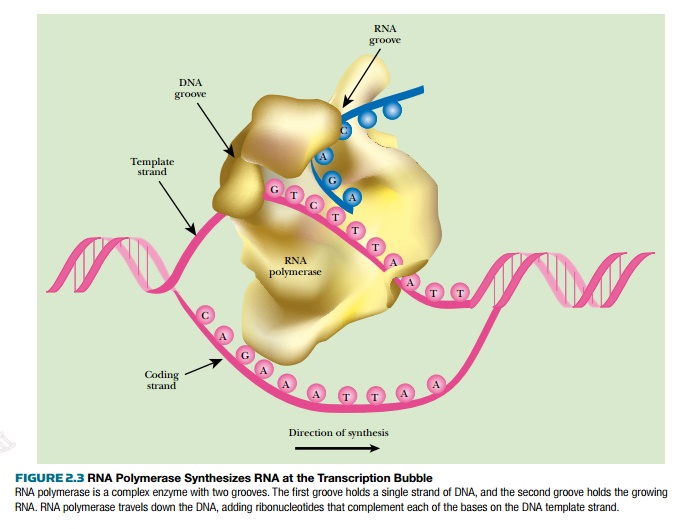Chapter: Biotechnology Applying the Genetic Revolution: DNA, RNA, and Protein
Making the RNA
MAKING
THE RNA
In bacteria, once the sigma
subunit of RNA polymerase recognizes the –10 and –35 regions, the core enzyme
forms a transcription bubble where
the two DNA strands are separated from each other (Fig. 2.3). The strand used
by RNA polymerase is called the template strand (aka noncoding or antisense)
and is complementary to the resulting mRNA. The core enzyme adds RNA
nucleotides in the 5′ to 3′ direction, based on the sequence of the
template strand of DNA. The newly made RNA anneals to the template strand of
the DNA via hydrogen bonds between base pairs. The opposite strand of DNA is
called the coding strand (aka nontemplate or sense strand).
Because this is complementary to the template strand, its sequence is identical to the RNA (except for the
replacement of thymine with uracil in RNA).

RNA synthesis normally starts
at a purine (normally an A) in the DNA that is flanked by two pyrimidines. The
most typical start sequence is CAT, but sometimes the A is replaced with a G.
The rate of elongation is about 40 nucleotides per second, which is much slower
than replication (∼1000 bp/sec). RNA polymerase
unwinds the DNA and creates positive supercoils as it travels down the DNA
strand. Behind RNA polymerase, the DNA is partially unwound and has surplus
negative supercoils. Just as during replication, DNA gyrase and topoisomerase I
either insert or remove negative supercoils, respectively, returning the DNA
back to its normal level of supercoiling.
RNA polymerase makes a copy of the gene using
the noncoding or template strand of DNA. The RNA has uracils instead of
thymines.
Related Topics